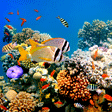- Home >
- Our Actions >
- Ambassador report
8
Comments
Neglected Importance and Essential of Snails in the Environment... |
|---|
|
by Victor eke mba | 26-10-2017 15:51
|
|
Snail is a common name loosely applied to shelled gastropods . The name is most often applied to land snails , terrestrial pulmonate gastropod molluscs . However, the common name snail is also used for most of the members of the molluscan class Gastropoda that have a coiled shell that is large enough for the animal to retract completely into. When the word "snail" is used in this most general sense, it includes not just land snails but also numerous species of sea snails and freshwater snails . Gastropods that naturally lack a shell, or have only an internal shell, are mostly called slugs, and land snails that have only a very small shell (that they cannot retract into) are often called semi-slugs .
Ah, snails. They?re small. They?re slimy. They lack the charisma of a polar bear or a gorilla. And yet just like flora and fauna all over the world, they?re disappearing. In Hawaii, a critically endangered snail called Achatinella fuscobasis has been brought into captivity to help learn how to keep them alive in the wild . In Alabama, conservation groups have petitioned to add the oblong rocksnail ( Leptoxis compacta ) to the Endangered Species List. In New Zealand, a snail known only as Rhytida oconnori has found itself constrained to a habitat just one square kilometer in size. On Fiji, scientists have expressed an ?urgent need? to keep the island?s unique tree snails from going extinct. That fate may have already happened to three snail species in Malaysia after a mining company wiped out their only habitats, a series of limestone hills. That?s just scratching the surface. By my count, nearly 140 scientific papers about endangered snails have been published so far this year. All of which begs the question: why does the extinction of a snail matter? Obviously the answer to that question depends on the exact species, but we can make generalizations. Many birds, fish and other species rely on snails as important parts of their diets. Most land snail species consume fungi and leaf litter, helping with decomposition, and many are carnivores, so they help keep other species in check. Beyond that, there?s actually a lot that we can learn from snails. ?From the most practical standpoint, snails have a few pretty interesting characteristics that tell us we should probably pay attention,? says snail researcher Rebecca Rundell , assistant professor at State University of New York. For one thing, their shells—which they carry with them their entire lives (because they?d die without them)—are made of calcium carbonate, which provides a record of their lives. Unlike plant husks or insect exoskeletons, these shells tend to persist after a snail has died, leaving behind a valuable tool for researchers. ?We can look in marine sediment and pockets of soil for evidence of past ecological communities, and thus evidence for environmental change in a particular area,? she says. Living snails can also serve as indicators when something is wrong with the environment, something we?re already seeing with ocean acidification. ?If snails in the ocean that make their shells, their protection, exclusively from calcium carbonate are having trouble building them, then that means the ocean is in big trouble,? Rundell says. They can provide similar clues on land, where land snails often have particularly narrow habitat requirements. ?They need certain levels of moisture, shade, and decaying matter,? Rundell says. ?When they don't have this, they start dying off.? That?s just the start: if tiny land snails start to disappear, it?s important to ask what might happen next. ?It might give you a chance to change course,? she says, ?to detect subtle changes that humans might not otherwise be able to see until it is too late.? Land snails serve an important role in the ecosystem. They eat very low on the food web, as most land snails will consume rotting vegetation like moist leaf litter, and also fungi and sometimes eat soil directly. The land snail relies on a diet rich in calcium and other nutrients to support the growth and repair of its shell as well as its overall health. Snails then in turn are consumed by a variety of predators that rely on snails for their calcium and other dietary needs. A great diversity of animal life feeds upon land snails, from insects to lizards and snakes, salamanders, birds and mammals. Some species of fireflies consume snails exclusively during their larval stage. Many birds rely on snails for the extra calcium they provide. The snails provide calcium and other nutrients vital to the formation of shells and embryos. One study showed that during egg-laying season, female wild turkeys consumed as much as 40 percent more snails than normal. If you enjoy fireflies, birds, lizards, and other animals, remember to thank the snails, who support their place on the food web! This drawing shows land snails at the bottom of the food web. Above the snail, you?ll see some of their common predators: firefly larvae, salamander, toad, rodents like chipmunks and mice, a wood thrush, turkey and box turtle. Above these, you?ll see the predators of the snail predators: fox, snake, bear, and hawk. |
 
|
|
|










 Previous : Insight into the Threatened Ty...
Previous : Insight into the Threatened Ty...









8 Comments
Never mind this whole thing is plagiarized and you should be ashamed of yourself Victor.
Posted 19-06-2021 07:51
https://blogs.scientificamerican.com/extinction-countdown/snails-going-extinct/
Did you happen to write this blog cause it it word for word
Posted 19-06-2021 07:49
its true farmers friend
Posted 30-01-2018 11:27
it maintain the fertility of land
Posted 30-01-2018 11:26
Yes, Elizaveta Snails are in every country...
Posted 28-10-2017 04:04
Thanks, I appreciate your kind words and encouragement...
Posted 28-10-2017 04:03
Hi, Victor! Thank you for your well-written report on snails. I liked how your report was quite affectionate :) I could really feel how you truly care about these critters. I have also always been interested in snails, being so tiny and cute. I didn't know how important they actually were in the ecosystem, so it was exciting to learn about it! Great work!
Posted 27-10-2017 17:02
Hi Victor! Thanks for the interesting and detailed report about snails. I often see them in Taiwan after a rain.
Posted 26-10-2017 23:04